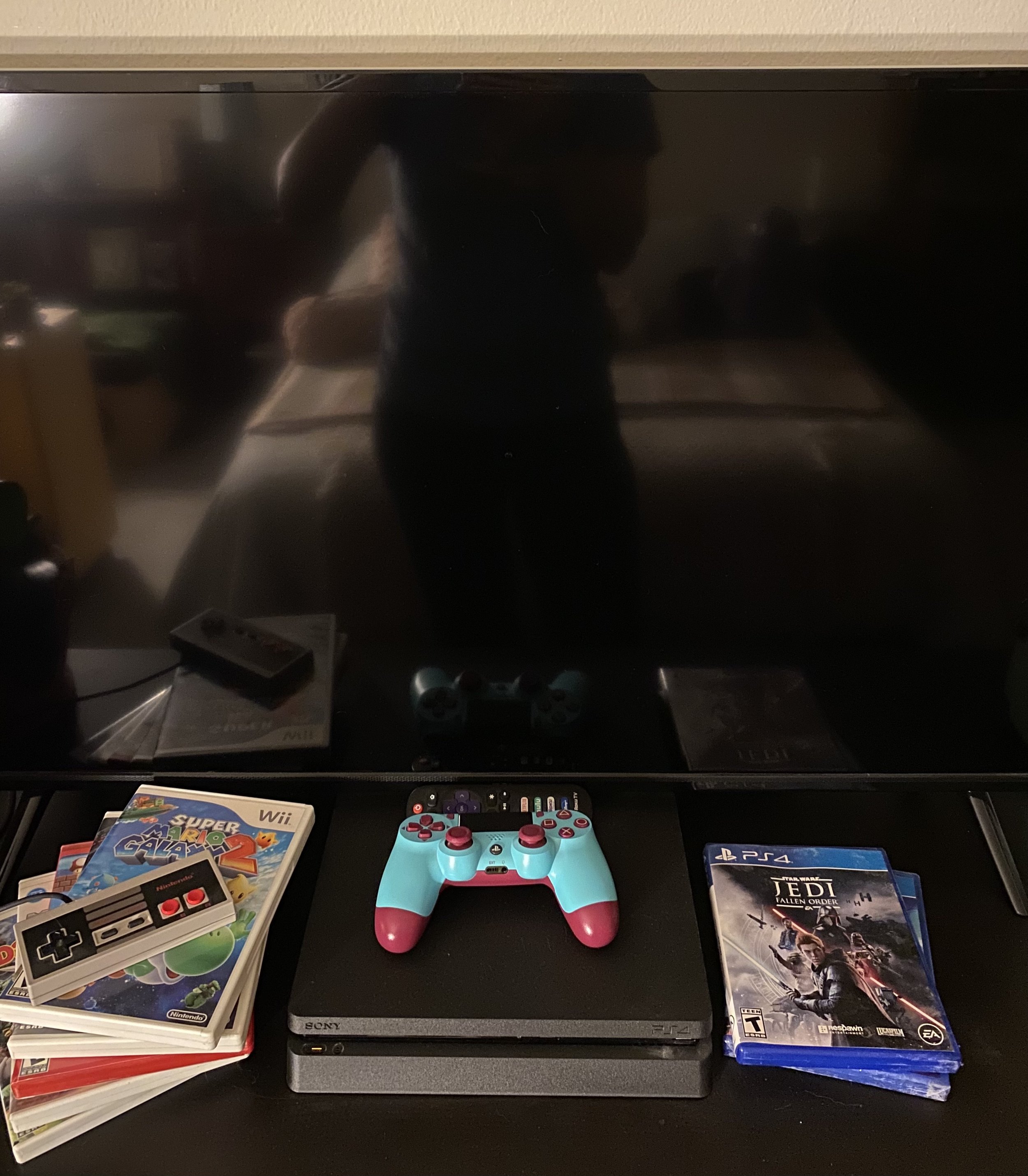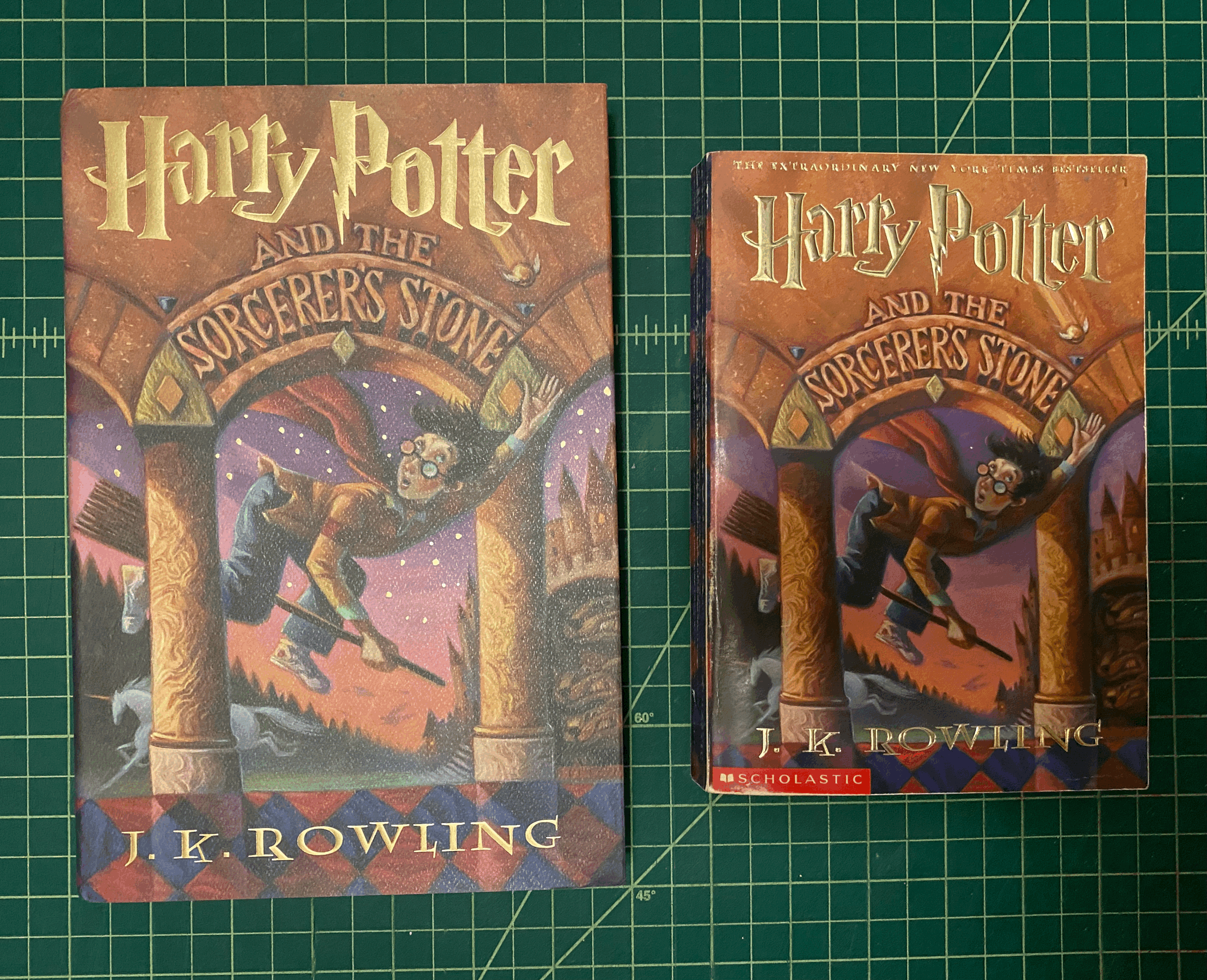THIS IS PART III IN A SERIES
The book as artifact is about the physical features and materials that comprise a book. I’ve already discussed a lot of the materials and physical features of the Harry Potter series but let’s jump back inside the books. I’ve already discussed the lighter, thinner, cheaper paper used in the US paperbacks. This contributes to the lower cost of those editions. After reading an article in Alternatives Journal, I’m now seeking out a copy of the Canadian version of Harry Potter and the Order of the Phoenix. Vancouver-based Rainforest Books took tactile to another level, choosing to print all 255,000 words of the longest book in the series on ancient forest friendly paper (Rogozinski, 2004). This bold move reminds us that the publishing industry and bookmaking in general can be a wasteful pursuit and actions like these, taken with such a popular book that sold over 13 million copies in 55 languages, could make other publishers pay attention to their materials choices.
“Every Ollivander wand has a core of a powerful magic substance, Mr. Potter. We use unicorn hairs, phoenix tail feathers, and the heartstrings of dragons. No two Ollivander wands are the same, just as no two unicorns, dragons, or phoenixes are quite the same. And of course, you will never get such good results with another wizard’s wand.” (Rowling, 1998, pp. 83-84).
Much like using recycled paper to print the fifth book in Canada, materials play an important part in the story of Harry Potter as well. While not all the materials descriptions in the series are book related, I wanted to bring up a few to enforce the importance of the materials used to create things. In the quote above we see the importance of the ingredients used in a wand core; a wizard is nothing without their wand. In fact, the materials of Harry’s wand and Voldemort’s— the wands are brothers— will prove key as the story progresses because the similar ingredients mean that they cannot easily fight each other with their own wands (Rowling, 1998 & 2000).
Hogwarts students take notes with parchment and quills, the original manuscript writing tools for early books (Rowling, 1998; Houston, 2016). When historic materials aren’t used, we see the damage they can cause. “You don’t mind, Harry, if I use a Quick-Quotes Quill? It leaves me free to talk to you normally…” (Rowling, 2000, p. 304). When gossip columnist Rita Skeeter uses a quill charmed to write automatically, readers see the truth of situations is drastically altered or even fabricated. Perhaps this hints at how some people thought the automation of the printing press was black magic? Speaking of dark magic, let us not forget Professor Umbridge’s detention quill…
“Harry raised the sharp black quill and then realized what was missing.
‘You haven’t given me any ink,’ he said.
‘Oh, you won’t need ink,’ said Professor Umbridge with the merest suggestion of a laugh in her voice.
…
He let out a gasp of pain. The words had appeared on the parchment in what appeared to be shining red ink. At the same time, the words had appeared on the back of Harry’s right hand, cut into his skin as though traced there by a scalpel…” (Rowling, 2003, pp. 266-267).
Professor Umbridge replaces ink and parchment with skin and blood in her detention sessions. The image conjured up in Umbridge’s office is reminiscent of anthropomorphic books, which are books bound in human skin. While not usually this gruesome, author Megan Rosenbloom speculates that books bound in human skin were connected to unjust medical practices, the prison system, and slavery (Rosenbloom, 2020).
Image of parchment and Harry Potter’s hand with letters carved into it from a chapter header in Harry Potter and the Order of the Phoenix.
And then there are the books inside the book
Rowling mainly describes text and reference books within the Harry Potter series, and we’ll get to those later, but she also shows readers some very interesting book objects.
“He had to start somewhere. Setting the lamp down carefully on the floor, he looked along the bottom shelf for an interesting-looking book. A large black and silver volume caught his eye. He pulled it out with difficulty, because it was very heavy, and, balancing it on his knee, let it fall open.
A piercing, bloodcurdling shriek sprite the silence — the book was screaming! Harry snapped it out, but the shriek went on and on, one high, unbroken, earsplitting note” (Rowling, 1998, p. 206).
In the first book in the series, Rowling gives readers a glimpse into the unusual nature of books in the wizarding world. While dust jackets are used to entice readers to choose a book to purchase, the enticing cover of the screaming book was a foil and meant danger for Harry (Stevenson, 1997).
Perhaps the most unusual book in the wizard universe is introduced in Harry Potter and the Prisoner of Azkaban (Rowling, 1999).
“Harry got a surprise as he looked in at the bookshop window. Instead of the usual display of gold-embossed spell books the size of paving slabs, there was a large iron cage behind the glass that held about a hundred copies of The Monster Book of Monsters. Torn pages were flying everywhere as the books grappled with each other, locked together in furious wrestling matches and snapping aggressively” (p. 52).
While readers don’t get to learn what The Monster Book of Monsters is made out of, this curious and voracious book leaves readers asking a very important question integral to the study book history: how did this book come to be? It also reminds me of the poor quality wood-pulp paper that came into popular use in the Victorian era. It had to be treated so much that it was actively destroying itself from the moment it was made. It is still the most common type of paper used in trade publications and so the very books we love are slowly eating themselves, it’s just not as exciting as it was in Harry Potter.
Citations
Houston, K. (2016). The book: A cover-to-cover exploration of the most powerful object of our time. W. W. Norton & Company.
Rogozinski, E. (2004). Harry Potter and the Order of Green Paper. Alternatives Journal (AJ) - Canada’s Environmental Voice, 30(3), 17.
Rosenbloom, M. (2020). Dark archives: A librarian’s investigation into the science and history of books bound in human skin. Picador.
Rowling, J.K. (2003). Harry Potter and the order of the phoenix. Arthur A. Levine Books An Imprint of Scholastic.
Rowling, J.K. (2000). Harry Potter and the Goblet of Fire. Arthur A. Levine Books An Imprint of Scholastic.
Rowling, J.K. (1999). Harry Potter and the Prisoner of Azkaban. Arthur A. Levine Books An Imprint of Scholastic.
Rowling, J.K. (1998). Harry Potter and the sorcerer’s stone. Arthur A. Levine Books, an imprint of Scholastic Press.
Stevenson, N. (1997). Hipper, brighter and bolder. (Cover story). Publishers Weekly, 244(7), 139.
*Some citations for web resources are linked directly in the post (in blue).







































